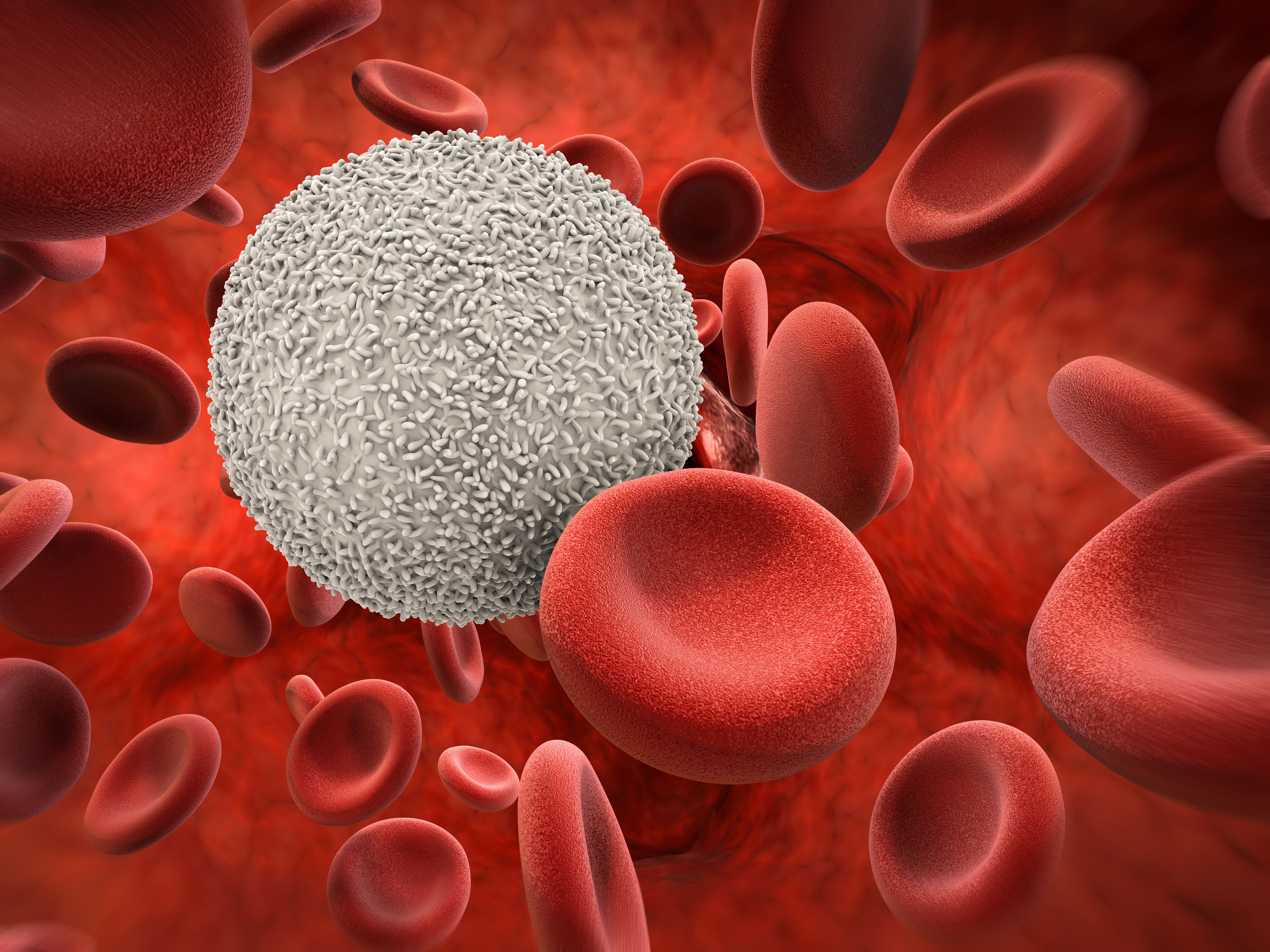Determining the Outcomes of TTI-622 With Azacitidine for TP53-Mutant AML
Cancer research sites across the United States are evaluating the use of TTI-622 plus azacitidine in patients with T53-mutated acute myeloid leukemia.

The investigational immune checkpoint inhibitor, TTI-622 (SIRPα-IgG4 Fc), has recently been dosed in the first patient with TP53-mutated acute myeloid leukemia in combination with azacitidine (Vidaza) as part of cohort A of the phase 1 clinical trial, according to a press release issued by Trillium Therapeutics, Inc.1
TTI-622 functions as a blocker of CD47 inhibitory activity. CD47 is overexpressed in many tumors, including AML. In preclinical studies, TTI-622 has signal anti-tumor activity against AML cell as a single-agent and in combination with azacitidine.
“The dosing of this patient marks the third combination cohort that has been initiated with TTI-622,” said. Ingmar Bruns, MD. PhD, chief medical officer at T Trillium Therapeutics, Inc, in a press release. “This is our second study in AML and demonstrates our commitment to these patients.”
The phase 1a/1b dose-escalation and expansion trial is exploring the safety and early efficacy of TTI-662 with the primary end points of the frequency and severity of adverse events (AEs) and the efficacy of each combination therapy. Secondary end points gemogenovatucel-T being explored in the study include pharmacokinetics, and evidence of preliminary anti-tumor activity.
A total of 150 patients with advanced hematologic malignancies will be enrolled in the study, of which approximately 25 with be included in the TP53-mutated AML cohort. Patients will receive either TTI-622 monotherapy, TTI-662 plus azacitidine (cohort A), TTI-622 in combination with azacitidine and venetoclax (Venclexta; cohort B), or TTI-622 in combination with azacitidine and dexamethasone (cohort C).
Preliminary results from phase 1a of the study were announced in 2020 from the cohort of patients received TTI-622 monotherapy (n = 31). Sixteen patients in the study evaluated diffuse large B-cell lymphoma (DLBCL), 5 had Hodgkin lymphoma (HL), 3 had follicular lymphoma, 3 had peripheral T-cell lymphoma (PTCL), 3 had cutaneous T-cell lymphoma (CTCL) with large-cell transformation, and 1 patient had mantle cell lymphoma (MCL). The median age for the patient population was 66 years (range, 24-86) and patients were predominantly female (58%).2
The objective response rate observed with the agent was 27% in the 22 response-evaluable patients. In terms of safety, 1 dose-limiting toxicity (DLT) of grade 4 thrombocytopenia occurred. The event was resolved quickly after prophylactic platelet transfusion was given.
The majority of the AEs observed were grade 1 or 2 in severity. The most frequently observed AEs were thrombocytopenia (16%), neutropenia (13%), as well as nausea, anemia, and fatigue, which occurred in 10% of patients each. Grade 3 or higher AEs included neutropenia (13%), and thrombocytopenia and anemia in 3% of patients each. Two patients required treatment interruptions for 1 to 2 weeks due to neutropenia and 1 patient required a treatment interruption due to thrombocytopenia.
Patients are eligible to enroll given they have available tumor tissue for biopsy, an ECOG performance status of 0-2, adequate coagulation, hepatic, hematologic, and renal function, and have recovered from non-hematologic toxicities from prior anticancer therapies. Disease in cohort A patients must be histologically confirmed as a new diagnosis of TP53-mutated AML and all patients are required to be elderly and unfit for more aggressive treatment.3
The study excluded individuals who have current central nervous system involvement. Prior use of an investigation agent of anticancer agent within 14 days of starting study treatment, radiation therapy within 14 days, transplant with in 90 days, or major surgery within 309 days were also ground for exclusion form the study.
“There are very few therapeutic options for TP53-mutated AML patients, and their prognosis is poor,” added Bruns, in the press release.1“We believe TTI-622 added to standard-of-care azacitidine has the potential to improve patient outcomes.”
Reference:
1. Trillium Therapeutics announces dosing of first patient in phase 1b/2 study of TTI-622 in combination with azacitidine in tp53-mutated acute myeloid leukemia. News release. Trillium Therapeutics. August 9, 2021. Accessed September 3, 2021. https://bit.ly/3mX9AWB
2. Patel K, Ramchandren R, Maris M, et al. Investigational CD47-Blocker TTI-622 shows single-agent activity in patients with advanced relapsed or refractory lymphoma: update from the ongoing first-in-human dose escalation study. Presented at: 2020 ASH Annual Meeting; December 5-8, 2020; Virtual. Abstract 1191.
3. A Trial of TTI-622 in patients with advanced hematologic malignancies (TTI-622-01). Clinicaltrials.gov. Accessed September 3, 2021.